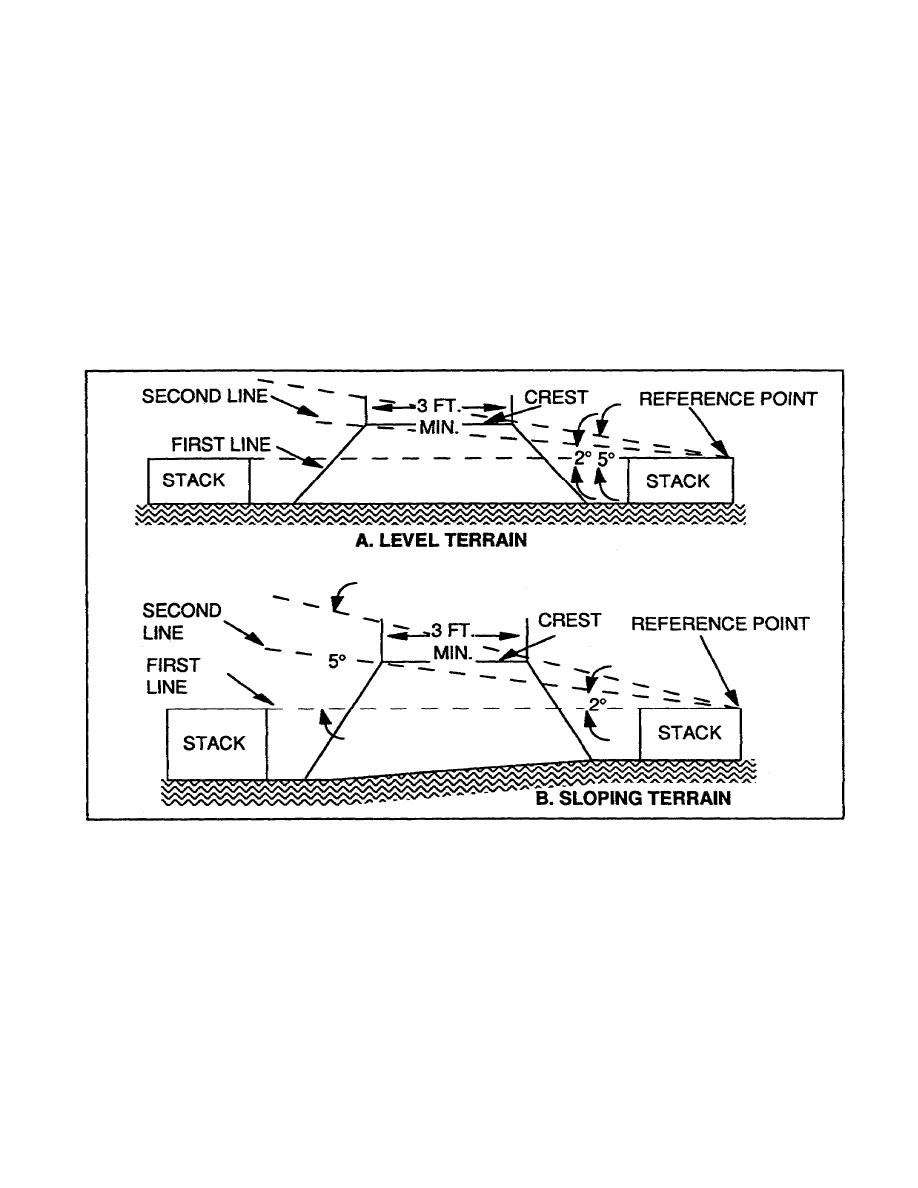
(g). In the modular storage system the construction of barricades is of the utmost importance. The
height, length, width, and even the material used in the construction of these barricades must be
planned to ensure the barricades protect adjacent cells and modules.
(1). The minimum barricade height above the top of the stack is influenced by the width or length
of the stack (storage pad size ) and the distance between the stack and the top of the barricade
(see Figure 6 below and Figure 7, page 10). Heights shown in Figure 6 represent the
minimum requirements for barricade locations, based upon storage pad sizes and separations
shown. Remember these are the minimum requirements. It is recommended that where
feasible, barricade height should be scaled up from 3 to 5 feet greater than those shown in
Figures 6 thru 8. This increased height is based on a line drawn at an angle of 5 degrees
above the horizontal , versus the 2 degrees required for the minimum standards. Such
barricades using the 5 degree line should stop almost all of the fragments capable of
propagating an explosion from cell to cell.
Figure 6. Determination of barricade height
(2). After you determine the height of your barricade, you must then determine the proper slope
of the barricade. The slope of the barricade lessens the shattering effect of an explosion. The
slope shall not be steeper than 1-1/2 feet to 1 foot. Therefore, if you have a 20 foot high
barricade the slope should extend 30 feet on each side of the barricade (see Figure 8, page
10). Where possible the slope should be on a ratio of 2:1. For example, for every foot of
height you have you should go two feet out.
(3). The earth fill used for these barricades should contain not more than 15 percent stones or
gravel, all of which should pass through a one-inch screen.
9
MM0166


 Previous Page
Previous Page
